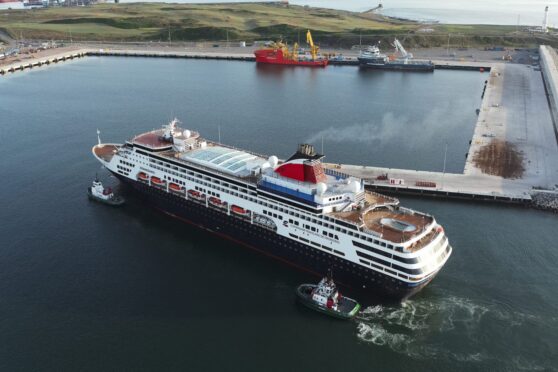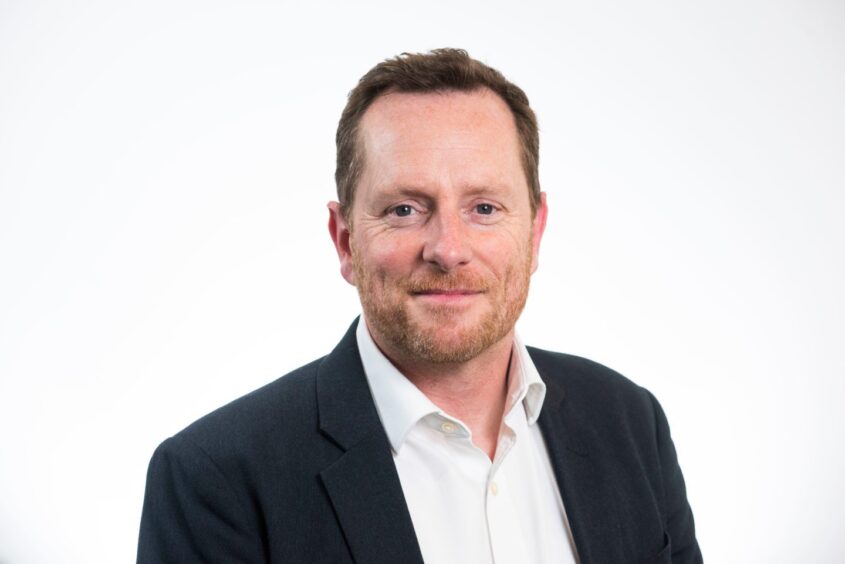Three fundamental pillars have empowered the Scottish National Investment Bank (the Bank) to position Scotland as a global industrial centre of excellence for Offshore Wind. Learn more about how the Bank helps businesses engaged in energy transition, the Just Transition Fund, and how this bank is looking to the future
-
Some Press and Journal online content is funded by outside parties. The revenue from this helps to sustain our independent news gathering. You will always know if you are reading paid-for material as it will be clearly labelled as “Partnership” on the site and on social media channels.
This can take two different forms.
“Presented by”
This means the content has been paid for and produced by the named advertiser.
“In partnership with”
This means the content has been paid for and approved by the named advertiser but written and edited by our own commercial content team.
How the Bank invests around 3 core mission areas
Established by Scottish Government, the Bank has been given a ten year, £2 billion commitment to investing in Scottish businesses to help in their transition to net zero. Jimmy Williamson, executive director – sustainable investments, outlined the Bank’s objective: “We deploy capital responsibly and commercially into the marketplace across Scotland, and those investments are built around three core mission areas which focus on addressing key challenges and create inclusive, long-term economic growth.”
These three core mission areas are: Grow a fairer, more sustainable economy and society through the journey to net zero; scale up innovation and technology for a more competitive and productive economy; transform communities, making them places where everyone thrives.
Jimmy confirmed that through its investments, the Bank is focused on supporting Scotland, stating: “For every pound of capital that we invest, we expect to deliver and drive some form of impact beyond just the financial return of the investments that we support.
“For some that may be carbon footprint reduction. It could be addressing inequality in certain businesses, improving housing stock across the country and more. We take those grand challenges that are at the top level, and we then distil them into more actionable investment ideas.”
Since the Bank started operating, it has made 29 investments and committed almost £460 million, with £750m from third parties committed alongside the Bank, equating to over £1.2bn committed to the Scottish economy in nearly three years.
The Bank: Investing locally and thinking globally
The Bank is committed to investing locally and thinking globally when it comes to aiding businesses, both large and small, in their transition to net zero.
While the drive to lower carbon emissions and clean energy is ultimately the end goal, Jimmy discussed some of the unintended side effects of a less nuanced approach:
“We see the north east of Scotland has particularly strong industrial and engineering skills in the oil and gas sectors. Many of these are highly relevant to the renewable sector, particularly floating offshore wind.”
Another problem that the Bank seeks to solve is a potential loss of talent and skills. He cited the north east of Scotland as an engine room of productivity for Scotland and for the UK when it comes to oil and gas.
“There’s global expertise in that sector and it’s incumbent on us to ensure that we capture the skill sets and the entrepreneurial spirit that exist in that industry, and help redirect and reposition and transition it to more sustainable energy sources going forward.”
Furthermore, Jimmy and investors like the Bank have observed that banks and investors are withdrawing capital from businesses that have oil and gas exposure. This loss of funds can actually prevent businesses from taking the steps to develop cleaner energy technology.
Therefore, the Bank doesn’t take a cookie-cutter approach when selecting which businesses to aid in their transition to net zero.
Energy transition and the Just Transition Fund
Indeed, the Bank invests in sustainable technology, services and industry, but also has a strong focus on a fair and just transition. On top of its normal allocation by the Scottish government, the Bank has been assigned an extra £25m from the Scottish Government’s Just Transition Fund, to be deployed in financial year 2023 / 24 – specifically designated for the north east of Scotland.
The Just Transition Fund is to invest in businesses, that have demonstrated commitments to transition to net zero. The Bank makes debt or equity investment between £1million and £50million.
As stated by Jimmy, the Just Transition Fund is “focused on businesses which are based in the parts of the country where there’s a strong heritage of oil and gas capability, as well as businesses which are making the first steps in the commitment to a transition.”
This could mean retraining, reskilling and reusing or restructuring existing infrastructure and practices in the industry. Jimmy said: “We are focused on making Scotland a global centre of expertise. We don’t want to leave anyone behind.
“Have a look at what we do and consider applying. Be part of the future.”
The Bank and the Port of Aberdeen
It’s easy to see the Bank’s ethos in practice when looking at its investments in the Port of Aberdeen. Investing £35m, the Bank’s funding has helped facilitate the completion of one of the largest marine infrastructure projects in the UK.
With Aberdeen South Harbour now complete, the new facility can accommodate vessels up to 300m in length.
Already an economic powerhouse for the region, independent analysis forecast that when the expanded Port of Aberdeen reaches its full potential the port’s Gross Value Added contribution will jump 60% to £2.4 billion and increase the number of jobs supported by 45% to an incredible 17,500.
The increased capacity will play a vital role delivering the supply chain benefits for the ScotWind leasing round, supporting the Bank’s mission to achieve a just transition to net zero.


